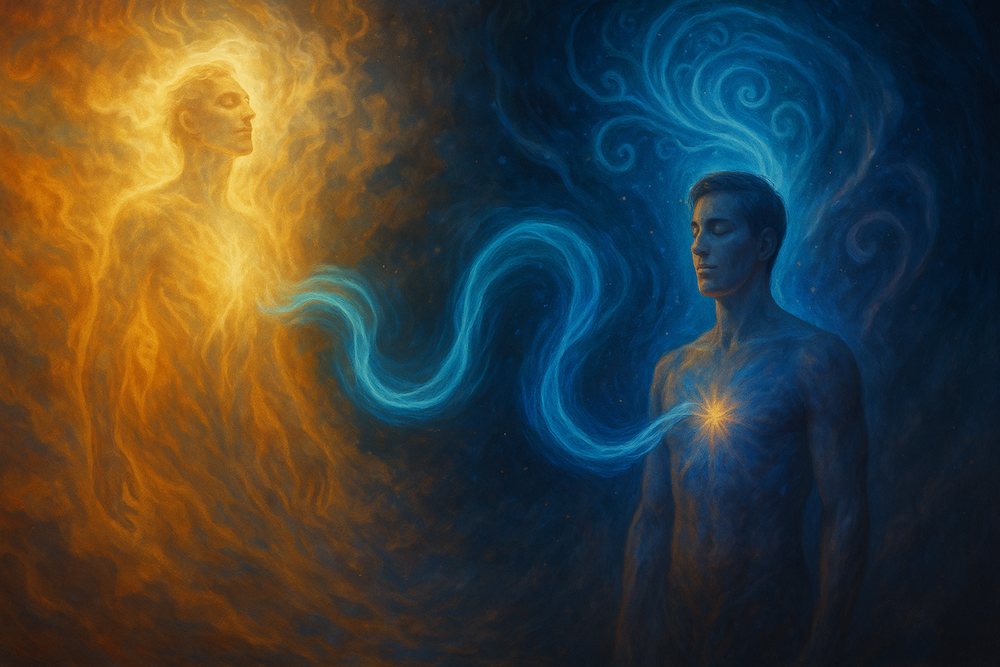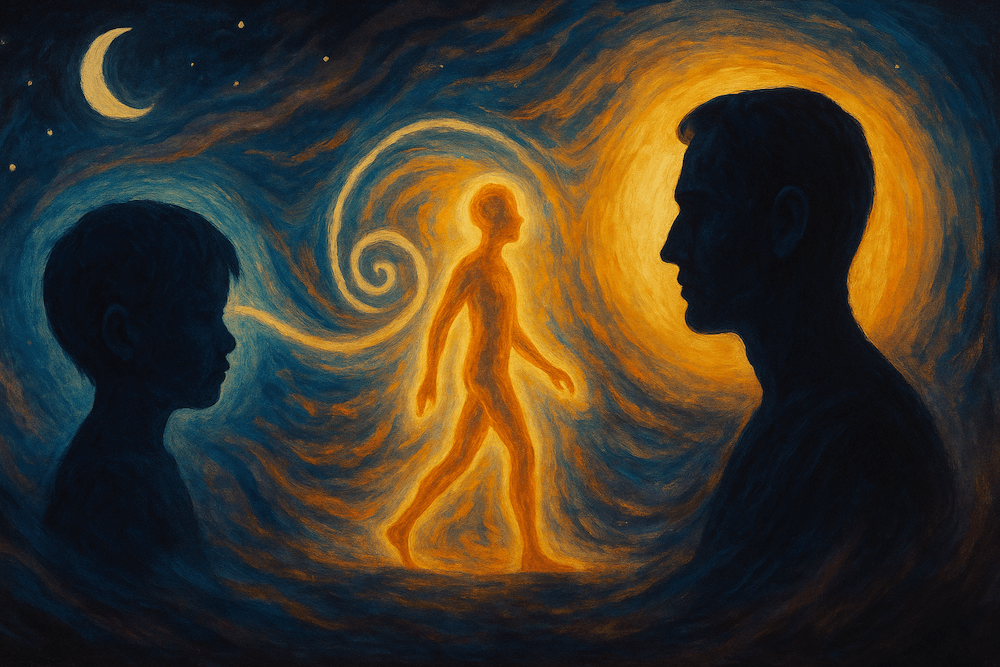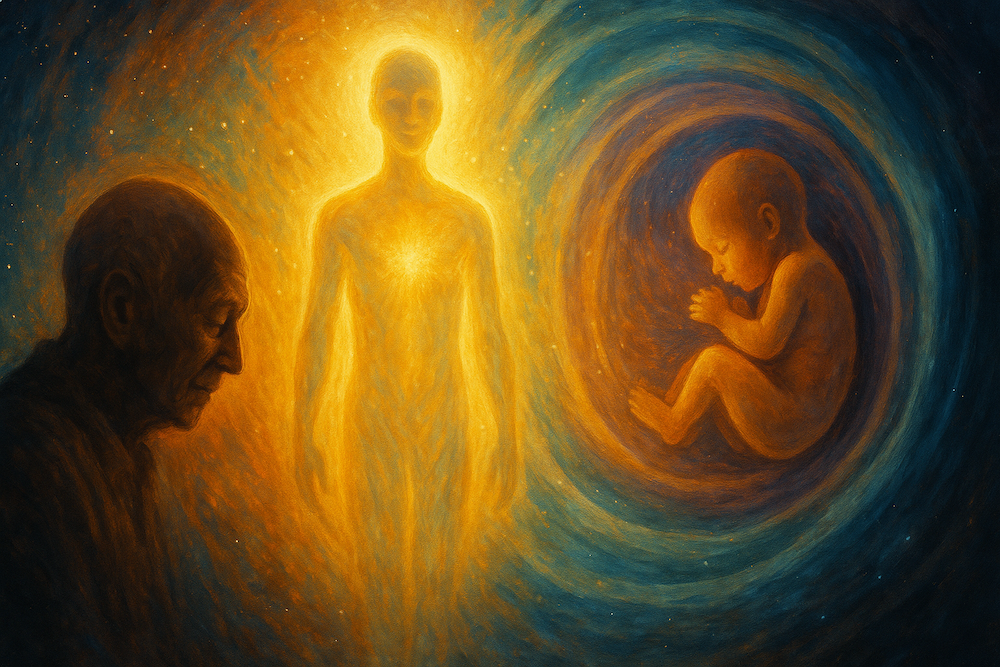For more than 50 years, researchers at the University of Virginia have been quietly looking into one of the most important questions about being human: Does consciousness live on after death? Their research, which looked at more than 2,500 documented cases of kids who said they remembered past lives, calls into question our most basic ideas about life, death, and what consciousness is.
Dr. Ian Stevenson started the work, and now it has grown into a serious scientific field that studies children who remember detailed memories of past lives on their own—memories that often match up almost perfectly with the lives of people who have died.

The Pioneer: Dr. Ian Stevenson's Groundbreaking Work
Dr. Ian Stevenson, head of the University of Virginia's Department of Psychiatry, made an unexpected career change in the 1960s. He stopped working as a psychiatrist and spent the rest of his life looking into reports of kids who said they remembered past lives. Stevenson looked into more than 3,000 cases himself over the course of more than 40 years. These cases came from all over the world, including India, Sri Lanka, Lebanon, Turkey, Thailand, Burma, and the American Northwest.
Stevenson's method was very careful. He would write down what the kids said before trying to find a dead person who might match what they remembered. He talked to family members, checked historical records, and looked at medical records, including autopsy reports when they were available. Carl Sagan, who still didn't believe in reincarnation, praised Stevenson's work as "carefully collected empirical data" that needed more study.
The Division of Perceptual Studies in Modern Research
Dr. Jim Tucker, who is in charge of the Division of Perceptual Studies (DOPS) at UVA, is still doing the research today. The database now has more than 2,500 cases, and about 70% of them are marked as "solved," which means that investigators were able to find a dead person whose life matches the child's memories almost perfectly.
There is a pattern that most cases follow. When a child is about three years old, they start talking about "when I was big" or "my other family" on their own. They give specific details about people, places, and events from what they say was a previous life. These memories usually go away when the child is six or seven years old, as their brain grows and they become more a part of their current life.
The Story of James Leininger: An American Example
James Leininger is one of the most interesting cases from the West. He started having horrible nightmares about plane crashes when he was two years old. He would wake up screaming, "Airplane crash! Little man can't get out!" As James got older, he gave more and more details:
- He had flown from a ship named "Natoma"
- The Japanese shot him down close to Iwo Jima.
- He flew a Corsair
- He had a buddy named Jack Larsen.
At first, James's father didn't believe it, but he eventually found out that these details were exactly what happened to James Huston Jr., a 21-year-old pilot who died when his FM-2 Wildcat was shot down near Iwo Jima on March 3, 1945. Huston did serve on the USS Natoma Bay and had a pilot friend named Jack Larsen.
The records of James's statements before Huston are important proof against claims of fraud or false memory. Family records and TV interviews show that James gave these exact details before anyone in his family had heard of James Huston.

The Ryan Hammons Case: Memories from Hollywood
Ryan Hammons from Oklahoma is another amazing American case. When he was four, he started begging his mother to take him "home" to Hollywood. Ryan talked about memories of being a Hollywood agent, dancing on Broadway, and having three sons whose names he couldn't remember. He would wake up from nightmares holding his chest and saying his heart had "exploded" in Hollywood.
Researchers finally linked Ryan's memories to Marty Martyn, a little-known talent agent who died in 1964, forty years before Ryan was born. Ryan's knowledge was broad and correct across 55 verified facts, such as:
- Before becoming an agent, Martyn worked as a Broadway dancer.
- His job at a talent agency where they made up stage names
- His address was on North Roxbury Drive, which Ryan said had "Rock" in the name.
- The number of times Martyn got married
- Information about Martyn's daughter taking piano lessons
There is no conventional way to explain how accurate Ryan's memories are, which were written down before Martyn was found.
Birthmarks and Physical Connections
One of the most interesting things about Stevenson's research is how birthmarks and birth defects match up with fatal injuries that the supposed previous personality had. In his extensive two-volume treatise "Reincarnation and Biology," Stevenson chronicled instances in which children exhibited birthmarks in precise locations corresponding to fatal injuries sustained by deceased individuals.
About 35% of the kids in Stevenson's database had these kinds of physical connections. These weren't normal birthmarks; they were strange shapes, like linear marks, areas of hypopigmentation, or rare birth defects that looked like wounds, scars, or deformities that the child said they remembered from the deceased person.
One case was about a child who was born with a birthmark around his neck that looked like a rope. The child's memories matched those of a man who had been hanged. Another child who remembers being shot in the head was born with a small round birthmark in the same spot where medical records showed the bullet had entered the deceased person's skull.
Patterns Across Cultures and Common Traits
Even though these cases happen in very different cultures, they all show very similar patterns:
- Age of onset: Kids usually start talking about past lives when they are 2 to 4 years old.
- Spontaneous recall: The memories come back on their own, not through hypnosis or regression therapy
- Emotional intensity: Kids often get very upset when they talk about their "other family."
- Specific details: Names, places, family ties, and reasons for death are all given.
- Gradual fading: By age 6 or 7, most memories have faded and are gone.
- Violent deaths: About 70% of people who claimed to have lived before died in unnatural ways.
The uniformity of these characteristics across cultures indicates an intrinsic phenomenon rather than cultural conditioning.
Quantum Consciousness and Theoretical Frameworks
Dr. Tucker has suggested that quantum mechanics may offer a framework for comprehending the persistence of consciousness beyond corporeal demise. He points to discoveries in quantum physics that suggest consciousness is a key part of how reality is put together.
The well-known double-slit experiment shows that observing particles changes how they behave, which suggests that consciousness has an effect on physical reality at the quantum level. If consciousness is not solely generated by the brain but constitutes a fundamental aspect of reality, it may endure after death and potentially reestablish connections with novel physical systems.
This quantum consciousness hypothesis is still just a theory, but it fits with the ideas of some well-known physicists who think that consciousness is primary rather than something that comes from matter.

Questions and Answers for Skeptics
Critics of research on reincarnation have a number of problems with it:
Fraud and deception: Some skeptics say that parents coach their kids or make up stories to get attention or money. But most families don't get any benefits and often have to deal with social stigma. In many cases, the pre-identification paperwork proves that post-hoc fabrication is false.
Cultural conditioning: Critics contend that cases are predominantly found in cultures that believe in reincarnation. Researchers have not identified any correlation between cultural beliefs and case strength. Additionally, persuasive cases arise in Western societies devoid of reincarnation traditions.
Confirmation bias: Some people say that researchers only report evidence that supports their claims and ignore evidence that goes against them. Stevenson's published work, on the other hand, included case weaknesses and other possible explanations, which suggests that he was honest.
Cryptomnesia: The idea that kids might unconsciously take in information that they later remember as memories from a past life. This explanation has trouble with cases where the deceased person was not known to the family and was documented before being identified.
False memories: Kids may make up detailed stories that they later think are real memories. But the factual correctness and emotional consistency of many cases surpass ordinary childhood fantasies.
New Ways to Look into Things and Methods
Researchers today use more and more advanced methods to check case details and rule out normal explanations. They:
- Write down all statements before trying to identify dead people
- Give kids recognition tests where they have to name pictures or things
- Check claims with more than one independent source
- Talk to people in the family and the community who saw what happened
- Look at old records, medical files, and autopsy reports
- Take into account family dynamics and socioeconomic factors
The Division of Perceptual Studies has assigned codes to more than 200 variables for each case, which makes it possible to use statistics to look for patterns and connections in the database.
Cases Outside of Western Examples
American cases like James Leininger and Ryan Hammons get a lot of attention, but the fact that this is happening all over the world gives us a different view. Cases from India, Sri Lanka, Lebanon, and other nations frequently exhibit distinct cultural contexts while sharing analogous evidential characteristics.
In numerous Asian instances, children possess comprehensive knowledge of unfamiliar languages, customs, or geographical regions. Some show skills or knowledge that aren't right for their age or background, but they are consistent with the job or education they say they had in the past.
The cross-cultural consistency enhances the evidential foundation by illustrating that the phenomenon surpasses particular religious or cultural contexts.
What this means for science and philosophy
If research on reincarnation is correct, it would change how we think about consciousness, personal identity, and the mind-brain connection. The consequences go beyond just survival for one person to include questions about:
- The characteristics of memory and information retention
- The connection between consciousness and physical substance
- The potentiality of non-local consciousness
- How personality is formed and changes over time
- The basic structure of reality itself
These results contest materialist postulations that consciousness arises exclusively from cerebral activity, indicating more intricate interrelations between mind and matter.
Current Directions in Research
Current research examines various promising pathways:
Process-oriented research: Investigating the reasons behind why certain children recall past-life memories while others do not, analyzing potential genetic indicators, neurological variations, or familial interactions that may predispose individuals to such phenomena.
Longitudinal studies: Tracking children with past-life memories into adulthood to comprehend long-term impacts and the durability of related personality traits.
Physiological research: Examining if children with past-life memories display quantifiable variations in brain structure or function.
Xenoglossy studies: Investigating uncommon instances in which children exhibit proficiency in languages they have not acquired through conventional methods.
What Will Happen to Reincarnation Research in the Future
As research methods get better and data collection gets more organized, the field keeps changing. Digital archives keep case files safe for later study, and international research networks make it easier to do cross-cultural studies.
The implementation of stringent protocols and the participation of researchers from diverse disciplines—psychiatry, psychology, anthropology, linguistics—enhances the credibility of the field. Reincarnation research programs are now offered at major universities, and peer-reviewed journals regularly publish case studies and analytical papers.
But there are still a lot of problems to solve. Because the phenomenon happens on its own, it's hard to do controlled experiments. Cultural sensitivities in certain areas restrict research accessibility. And the claims are so unusual that they need very strong evidence to be accepted by mainstream science.
Conclusion: Evidence for Consciousness Beyond the Brain
The amassed evidence from more than 2,500 examined cases poses a significant challenge to established beliefs regarding consciousness and death. Although no singular case offers conclusive evidence of reincarnation, the aggregate evidence—validated memories, correlating birthmarks, cross-cultural uniformity, and meticulous documentation—indicates phenomena that surpass existing scientific frameworks.
The study does not substantiate the concept of reincarnation as the transference of souls between bodies. Nonetheless, it offers persuasive evidence that a certain type of information transfer transpires between deceased individuals and subsequently born offspring in manners not elucidated by existing scientific frameworks.
Whether regarded as consciousness survival, quantum information transfer, or unidentified mechanisms of memory inheritance, these instances necessitate rigorous scientific scrutiny. They propose that consciousness may transcend being merely an emergent property of brain activity, possibly embodying a fundamental aspect of reality that endures beyond physical death.
Dr. Tucker notes that the jump from evidence to reincarnation is still big, but the facts that have been recorded need to be explained. When scrutinized meticulously and impartially, these cases indicate a universe significantly more peculiar and enigmatic than contemporary science recognizes—one in which consciousness, memory, and identity may surpass the confines of individual lifetimes.
The investigation persists, propelled by stringent methodology and the acknowledgment that comprehending consciousness constitutes one of science's most formidable challenges. Researchers are simultaneously probing the deepest questions about human nature, the mind-brain relationship, and the ultimate structure of reality itself as they explore these apparent windows into post-mortem existence.
